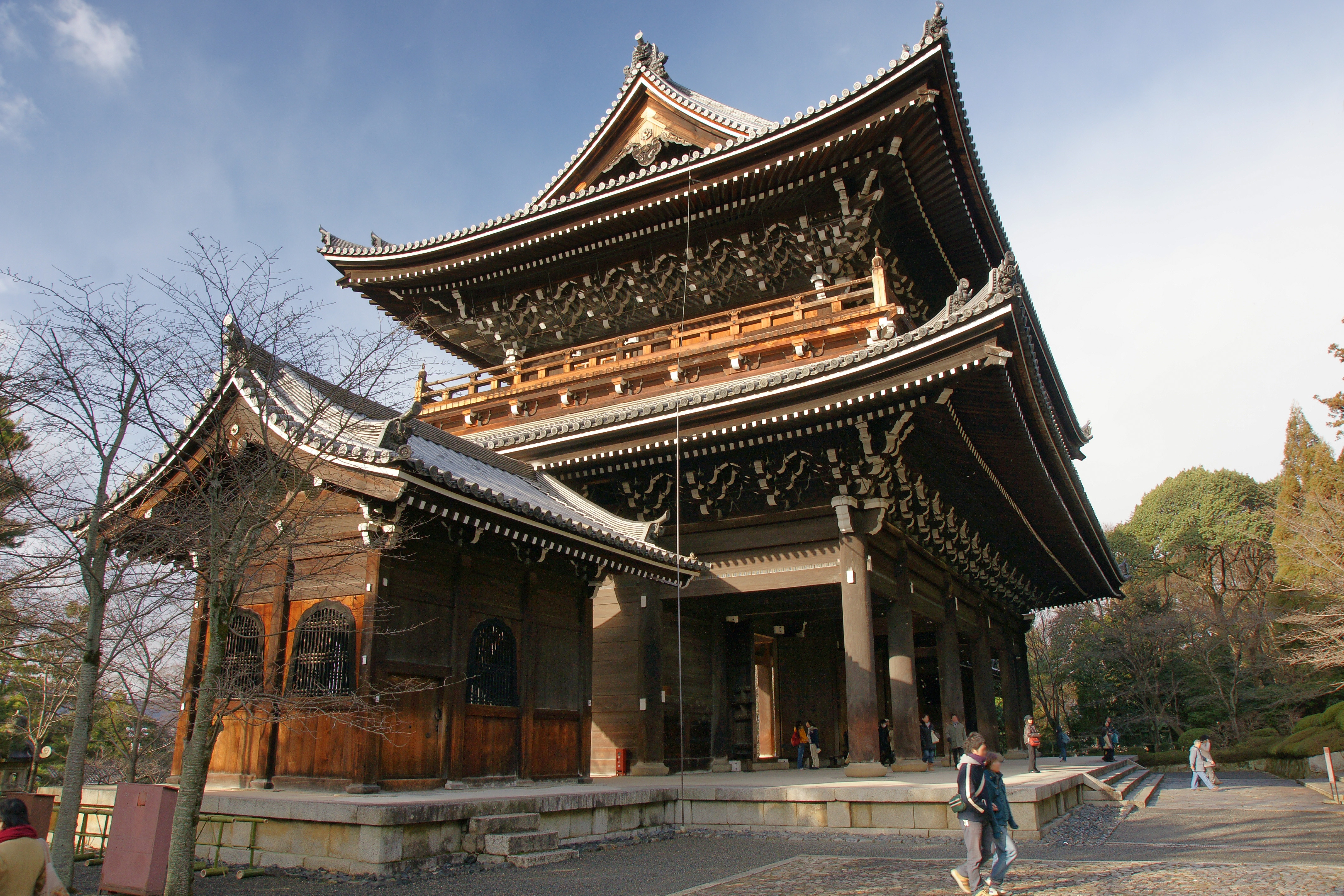|
Sainen-ji (Shinjuku)
Sainen-ji (西念寺) is a Buddhist temple belonging to the Jōdo-shū sect, located in Shinjuku Ward, Tokyo, Japan. It is known as the temple founded by Hattori Hanzō, a famous samurai of the Sengoku Period who served Tokugawa Ieyasu. The temple is the family temple of the Hattori clan, and contains the graves of Hanzō and other members of the Hattori clan. In addition, there is a memorial tower that is said to have been built by Hanzō for Tokugawa Ieyasu's eldest son, Nobuyasu, whom Hanzō served as guardian. History Sainen-ji Temple was founded in 1594, shortly after the Tokugawa clan took possession of Edo , when Hattori Hanzō founded its predecessor, An'yoin, in Shimizudani, Kojimachi, Edo (near modern-day Shimizudani Park in Kioicho, Chiyoda Ward). Hanzō took the Buddhist name Saien to commemorate the soul of Matsudaira Nobuyasu, who had died an untimely death. He built a memorial tower at An'yoin and spent the rest of his life praying for Nobuyasu's soul. A ... [...More Info...] [...Related Items...] OR: [Wikipedia] [Google] [Baidu] |
Jōdo-shū
, also known as Jōdo Buddhism, is a branch of Pure Land Buddhism derived from the teachings of the Japanese ex-Tendai monk Hōnen. It was established in 1175 and is the most widely practiced branch of Buddhism in Japan, along with Jōdo Shinshū. In the general classification of Buddhism in Japan, the Jōdo-shū, the Jōdo Shinshu, the Ji-shu and the Yuzu Nembutsu, Yuzu Nembutsu shu are collectively classified into the lineage of Jōdo Buddhism. (Jōdo kei, 浄土系) History The Founder: Hōnen Hōnen (法然) was born in 1133, the son of Uruma no Tokikuni of a local ruling family in Mimasaka Province. Hōnen was originally named Seishimaru after the mahāsattva Seishi (Sanskrit Mahasthamaprapta, Mahāsthāmaprāpta). After a rival official assassinated his father in 1141, Hōnen was initiated into his uncle's monastery at the age of 9. From then on, Hōnen lived his life as a monk and eventually studied at the famous monastery of Mount Hiei. Hōnen was well respect ... [...More Info...] [...Related Items...] OR: [Wikipedia] [Google] [Baidu] |
Kōjimachi
is a district in Chiyoda, Tokyo. History Prior to the arrival of Tokugawa Ieyasu, the area was known as . The area developed as townspeople settled along the Kōshū Kaidō. In 1878, the Kōjimachi area became , a ward of the city of Tokyo. In 1934 and 1938, the addressing system along the Koshu-Kaido was reorganized, creating the 6 chomes subdivision for Kōjimachi that are still used. In 1947, the Kōjimachi ward was merged with the Kanda ward to form the modern special ward Chiyoda, and the 6 chomes became the Kōjimachi district. The area centered upon Kōjimachi including the districts of the Banchō area, Kioichō, Hirakawachō and Hayabusachō is sometimes referred as the Kōjimachi area (麹町地区), not to be mistaken with Kōjimachi ward (麹町区). This place is also known for Hideki Tojo's birthplace, general of the Imperial Japanese Army. Landmarks and headquarters *Embassy of Portugal *Embassy of Ireland *Embassy of Belgium * Japan Sun Oil Company, ha ... [...More Info...] [...Related Items...] OR: [Wikipedia] [Google] [Baidu] |
Buildings And Structures In Shinjuku
A building, or edifice, is an enclosed structure with a roof and walls standing more or less permanently in one place, such as a house or factory (although there's also portable buildings). Buildings come in a variety of sizes, shapes, and functions, and have been adapted throughout history for a wide number of factors, from building materials available, to weather conditions, land prices, ground conditions, specific uses, prestige, and aesthetic reasons. To better understand the term ''building'' compare the list of nonbuilding structures. Buildings serve several societal needs – primarily as shelter from weather, security, living space, privacy, to store belongings, and to comfortably live and work. A building as a shelter represents a physical division of the human habitat (a place of comfort and safety) and the ''outside'' (a place that at times may be harsh and harmful). Ever since the first cave paintings, buildings have also become objects or canvasses of much art ... [...More Info...] [...Related Items...] OR: [Wikipedia] [Google] [Baidu] |
Gorintō
("five-ringed tower") is a Japanese type of Buddhist pagoda believed to have been first adopted by the Shingon and Tendai sects during the mid Heian period. It is used for memorial or funerary purposesKōjien Japanese Dictionary and is therefore common in Buddhist temples and cemeteries. It is also called ("five-ringed stupa") or , where the term ''sotoba'' is a transliteration of the Sanskrit word stupa. The stupa was originally a structure or other sacred building containing a relic of Buddha or of a saint, then it was gradually stylized in various ways and its shape can change quite a bit according to the era and to the country where it is found.Home Study Course on Basic Buddhism Often offertory strips of wood with five subdivisions and covered with elaborate inscriptions also called ''sotoba'' can be found at tombs in Japanese cemeteries (see photo below). The inscriptions contain sūtra and the posthumous name of the dead person. These can be considered stupa variants. St ... [...More Info...] [...Related Items...] OR: [Wikipedia] [Google] [Baidu] |

